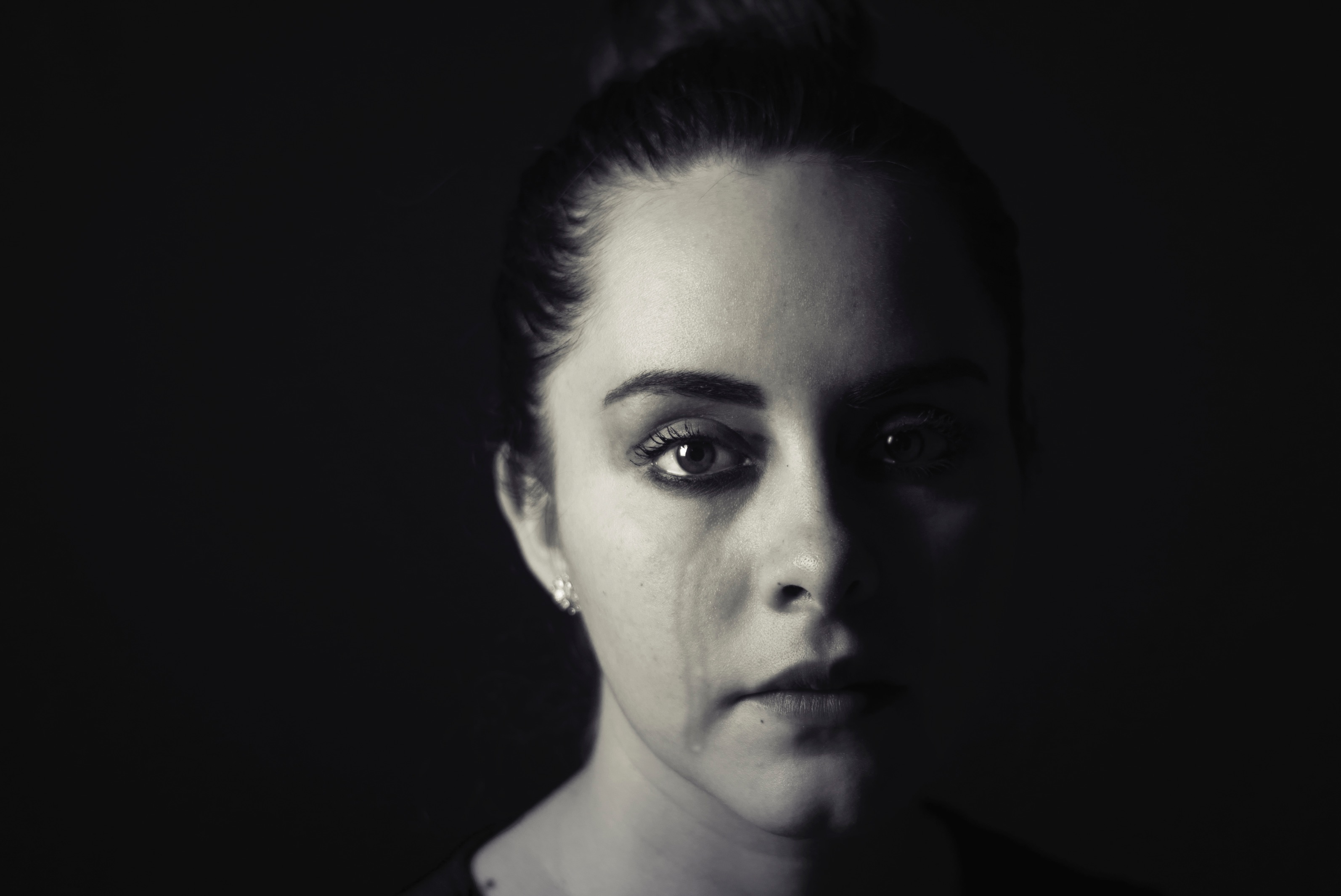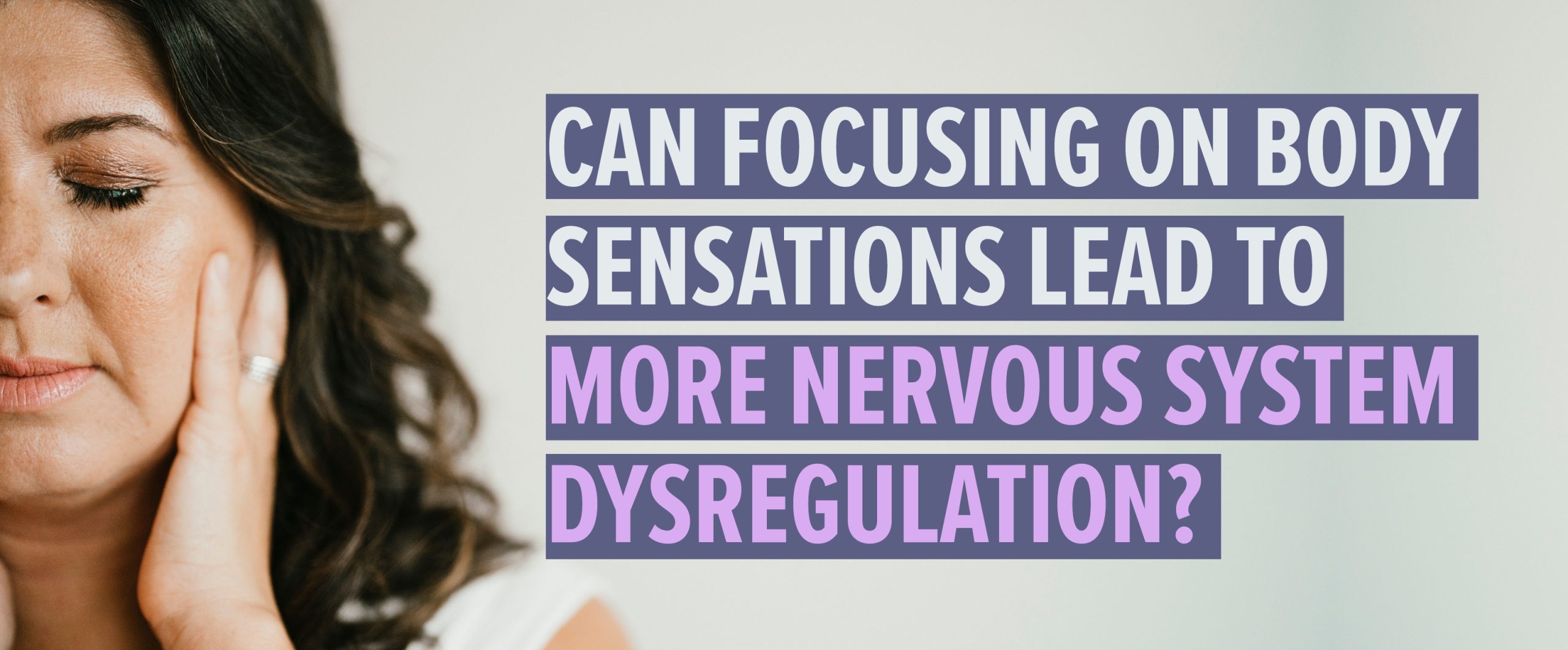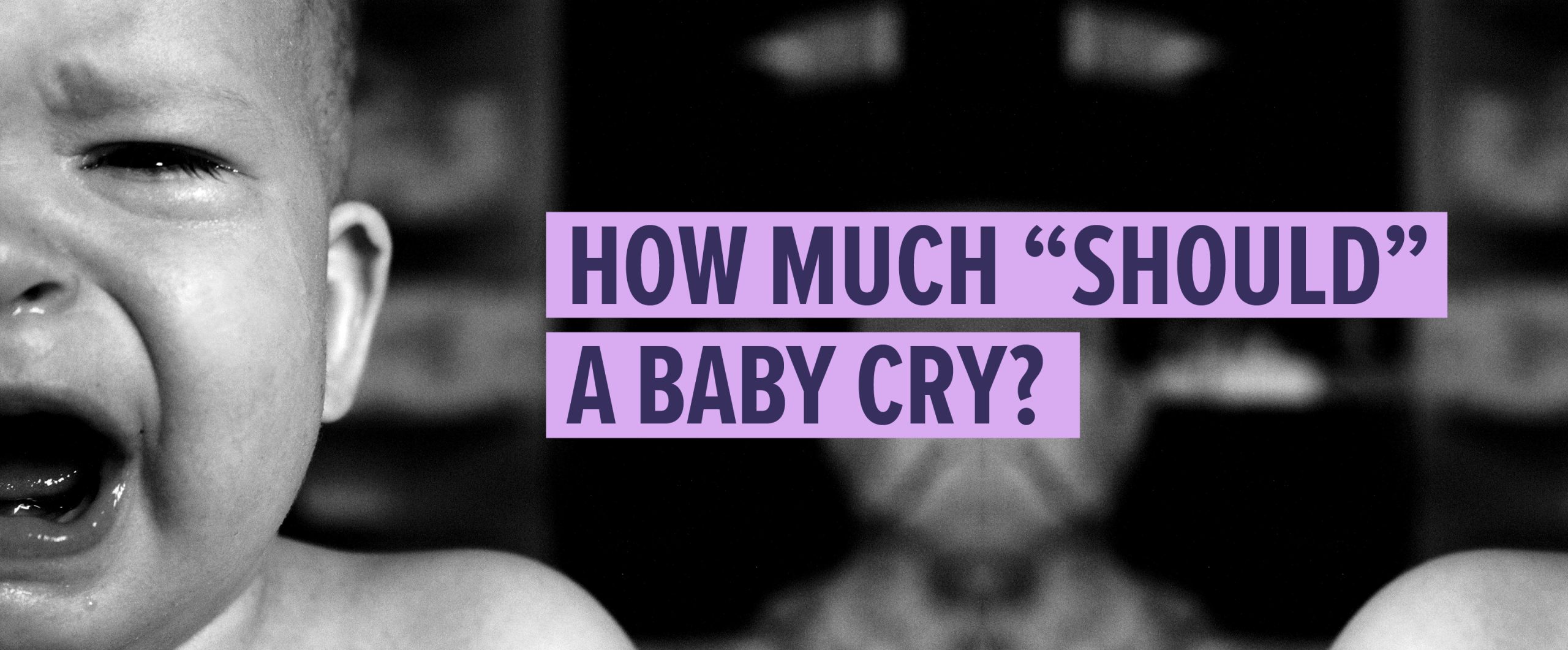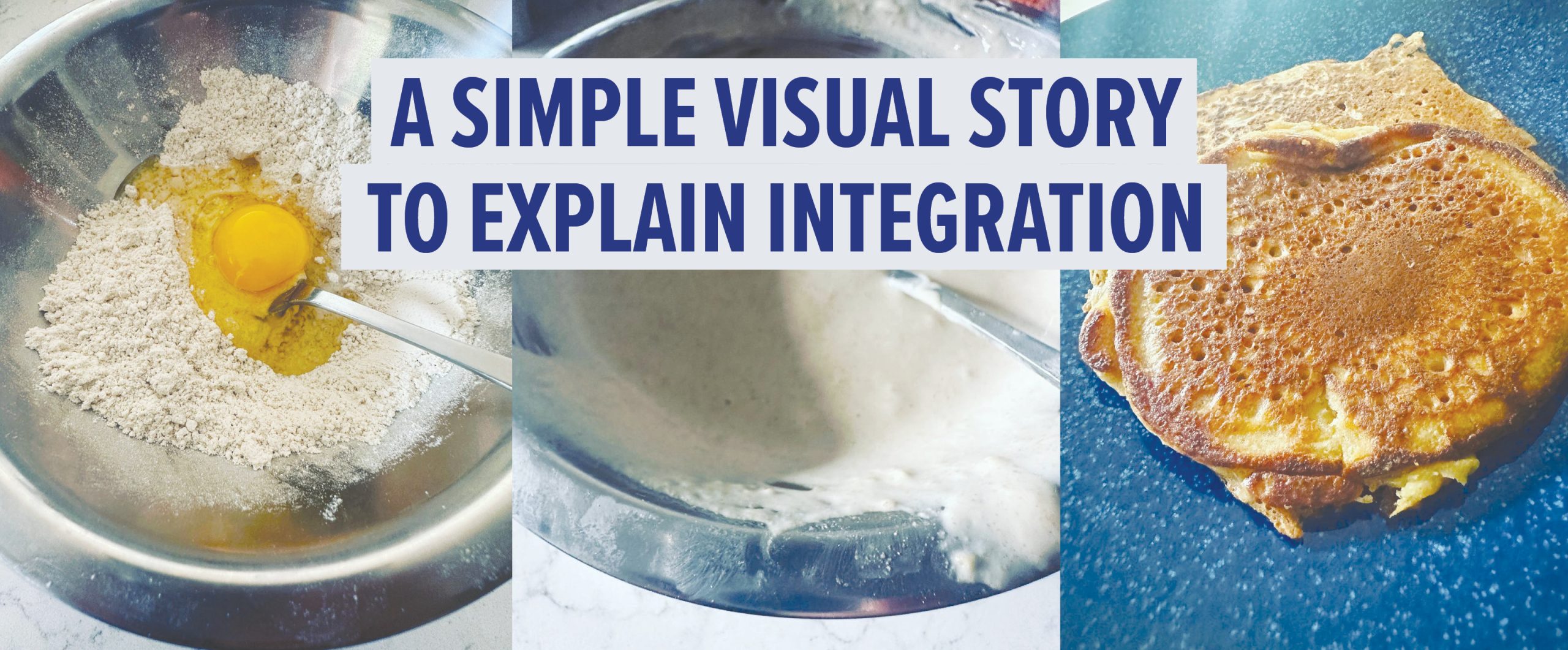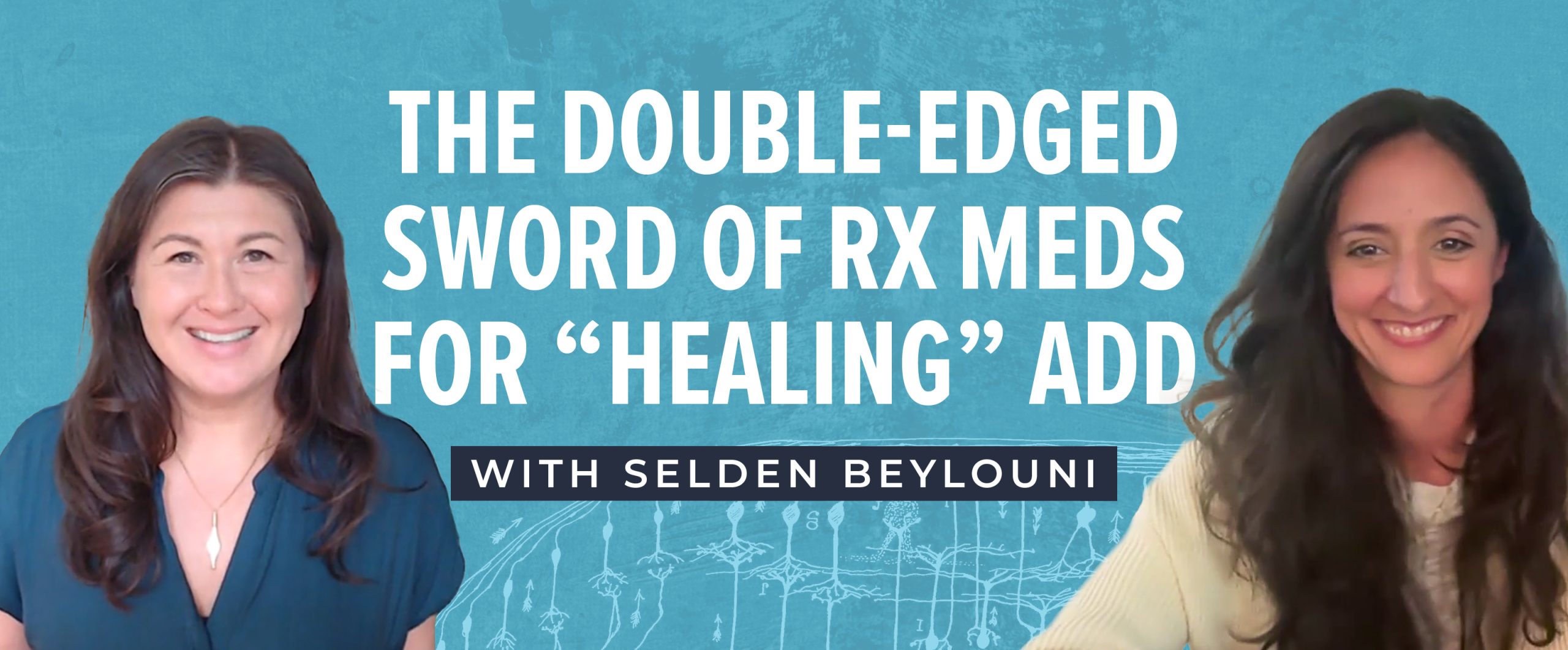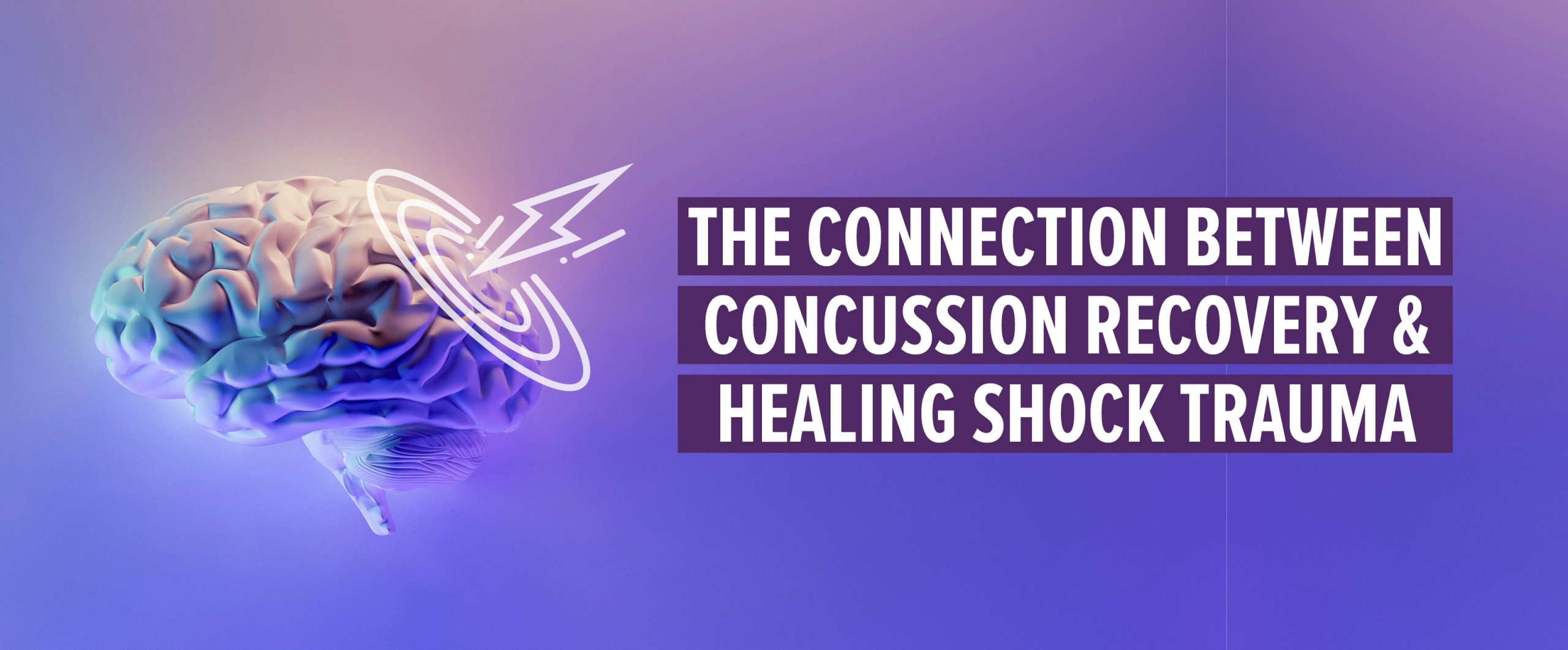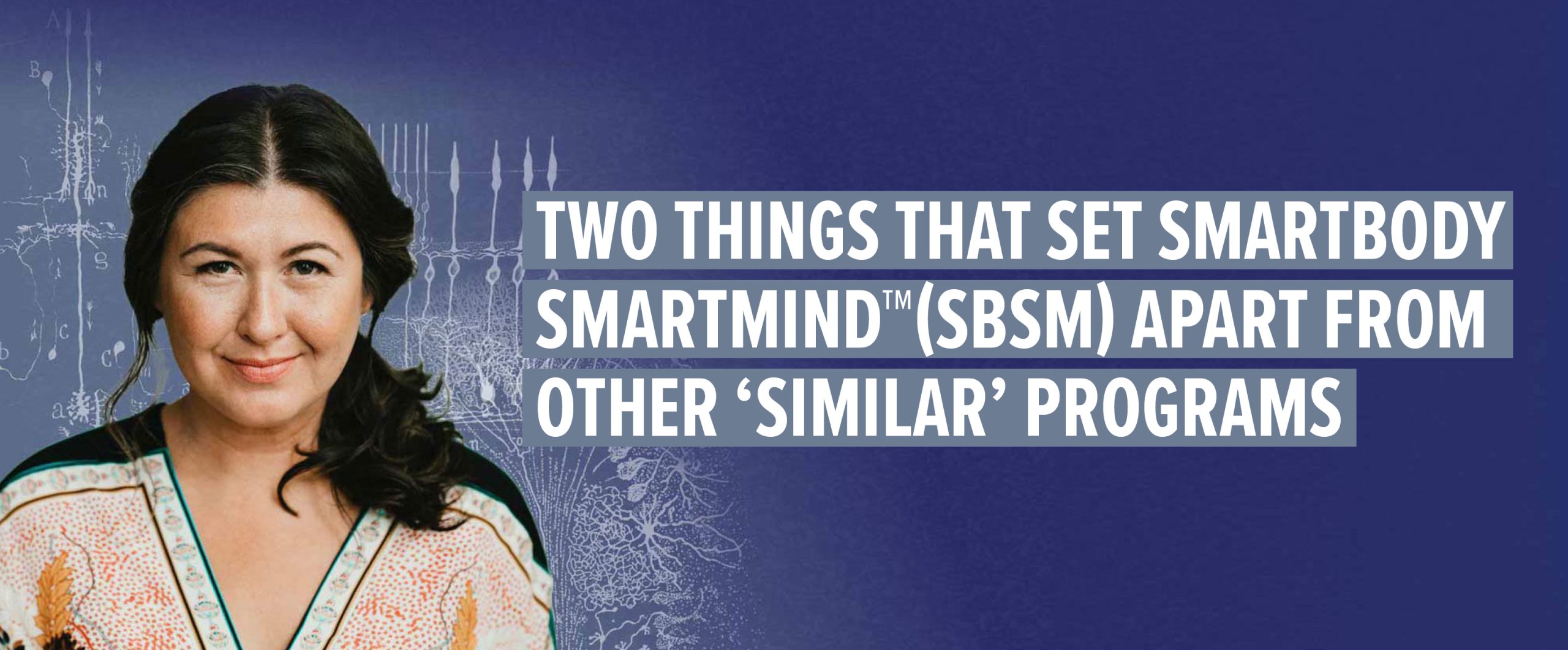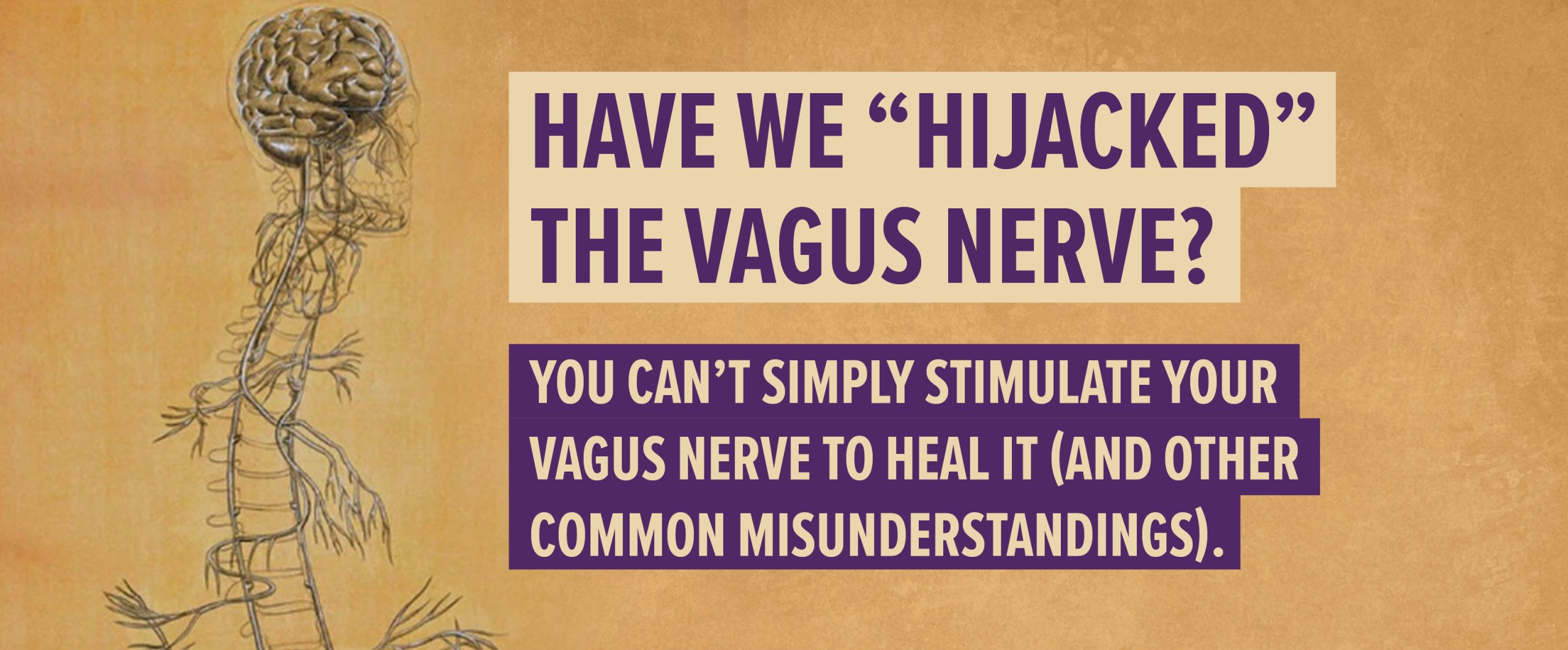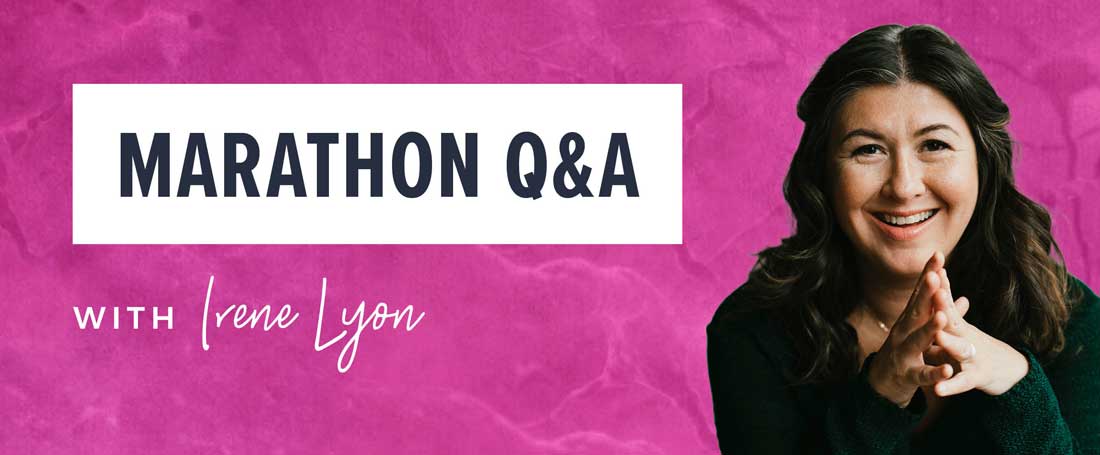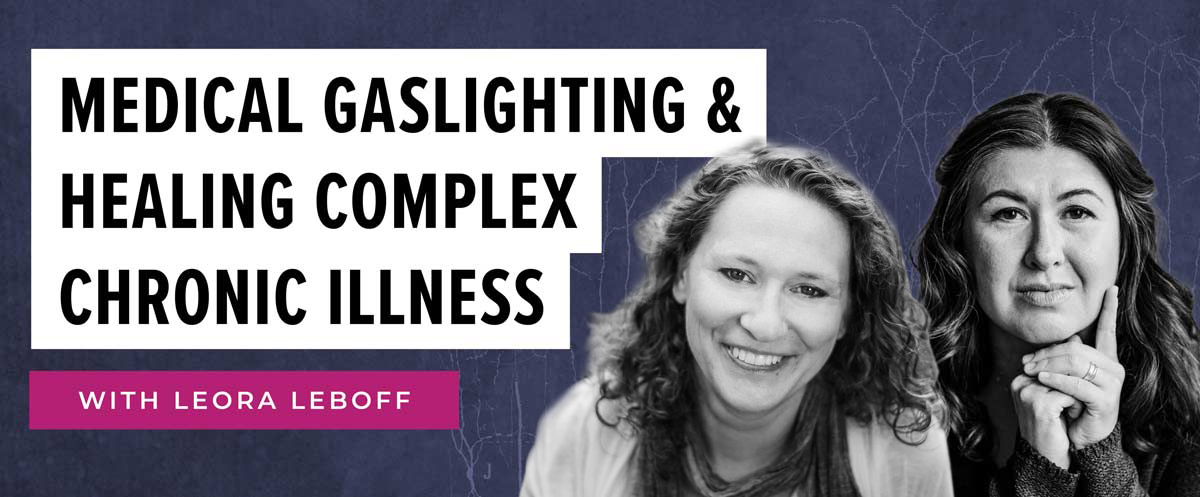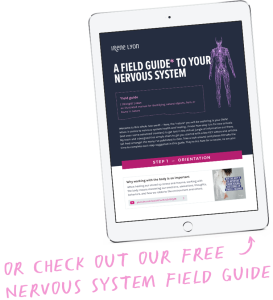Are you that person who has tried dozens of therapies and treatments?
Can you relate to trying a gazillion different cleanses and elimination diets (plus every kind of mind-body technique under the sun)? Do you still find yourself struggling with tricky to treat symptoms and wondering if you’ll ever be well enough to just let go and live?
If this is you, I’m so sorry you’re still living with so much pain and I want to acknowledge that a big part of why you’re still struggling is because for most of our history we didn’t understand nervous system health, the impacts of trauma, and the importance of properly sequencing our healing methods so they stick.
I want to offer up some broad strokes around topics that don’t always get connected when it comes to helping people heal and recover from chronic illnesses that never seem to go away no matter how much a person tries.
In this article you’ll learn:
- Why even the small stuff that we might not think is traumatic is in fact trauma.
- How insidious, toxic stress sets up our biology for failure (unless we do something about it).
- That time does not heal these wounds and why quick fixes will always fail.
- The importance of sequencing neuroplastic healing and why you’ll never get better if you don’t understand what this means.
If you are unwell, or if you help people who are, I cannot stress enough how important this message is. Let’s ignite a new health revolution.
The world is aching for it, literally.
Aren’t you?
First, I must begin with an analogy to remind us that many things we once knew nothing about are now common knowledge and saving lives.
Imagine you go to a doctor and you’re pretty certain you have some kind of bacterial pneumonia.
It’s really bad and needs to be treated. All of the antibacterial herbs in the world won’t cut it (you know because you’ve been trying!) At this point, even as a non-medically trained person, you have a hunch you need antibiotics.
But the doctor never confirms the pneumonia with a test. Nothing. So they don’t know the root cause of the signs and symptoms. You’ve got a fever, pain, sweats, chills, a horrific cough and shortness of breath. They send you home with some aspirin because you’ve got a headache and fever. But, that’s it. No antibiotics. Nothing.
The headache lessens for a day, but the fever and pain continue. It becomes harder to breath. Things get worse. Much worse.
You might question this doctor’s expertise because it would seem like this is straightforward medical knowledge: high fever, pain, sweating, chill, trouble breathing; all signs of what might be bacterial pneumonia and the body trying to fight it.
We now know these signs and symptoms can be indicative of an infection. There are tests to confirm the diagnosis, standard protocols for treatment and no one should ever die because of an infection, at least not now, right?
But, back in the day, before the invention of antibiotics, people would die.
Some even died when there was a cure; either because they didn’t know it existed, the supply wasn’t there, or because the doctor simply treated the symptoms and didn’t look further into the root cause.
Enter our current epidemic
A massive percentage of our population is struggling with a different kind of infection.
What I’m talking about is early adversity, childhood trauma and its strong connection with chronic illnesses of the physical and mental variety. And while I understand this isn’t the most glamorous of things to think about, we’ve neglected this conversation for way too long. I believe it’s time to wake up to this reality and do something about it.
For example, here’s a partial list of the diseases researchers at the Center for Disease Control suspect originate from the barrage of fear and threat dosed out to young children and infants via abuse, early trauma and adversity*:
- Type 2 diabetes
- Crohn’s disease
- Hypertension
- Irritable bowel syndrome
- Cardiovascular disease
- Morbid obesity
- Osteoarthritis
- Anxiety and depression
- Fibromyalgia
- Chronic fatigue syndrome
- Chronic pain syndrome
- Addiction to drugs, alcohol and nicotine
- Cushing’s syndrome
- Anorexia nervosa
- Osteoporosis
- Ulcerative colitis
- Susceptibility to forms of cancer (including breast and melanoma)
Metaphorically speaking, the early adverse traumatic experiences are the infection.
Chronic, toxic stress to a child’s survival and safety is the root cause and the chronic illnesses listed above (plus many more not listed) are the by-product, the symptoms.
At this point in our world, this is NOT common knowledge.
The ships haven’t sent out the signal yet. And while this is known in some circles, not everyone understands it, and a lot of people don’t know how to treat it.
The good news is there is an antibiotic equivalent to recovering and healing from these illnesses that are caused by early adversity and toxic stress, and that medicine is 100% natural and already lives in our bodies, but we have not been taught how to access it, or even know that it exists.
But, if you’d like to know more right now, keep reading.
Here are the basics.
What defines an early trauma or adverse experience?
It’s common for people to dismiss the word ‘trauma’ because they don’t classify themselves as being ‘traumatized’. We tend to associate trauma with the horrors of war, or survivors of physical or sexual abuse.
And while those do constitute traumatic experiences, there are also insidious and tricky-to-pinpoint toxic stressors that put a person into a trauma response, leaving them unwell to the point of complex post-traumatic stress disorders (PTSD).
Here are some common situations that can create PTSD symptoms and are just as severe as what a soldier might experience after returning from combat:
- Highly stressful birth experiences.
- Premature birth wherein the baby is in isolation and in an incubator.
- Early surgical procedures and/or being hospitalized and pinned down for treatment.
- Parents who are not well and not able to provide the appropriate care for a growing infant and child.
- Lack of safety in the home life (abuse and neglect of all kinds, not enough food, shelter, being left alone for long periods of time).
- Chronic suppression of emotions and the classic ‘children should be seen and not heard’ motto.
- High expectations placed upon a child such that they feel ashamed of their (lack of) ability.
- School bullying, being ridiculed.
This list is by no means complete, but gives a broad spectrum of situations that put a child into a significant state of high stress that matches near death experiences.
How early stress impacts our capacity to heal
Let’s keep this simple.
When we are not safe, put into a stressful situation, or are rendered helpless and unable to fight or flee a terrible environment, the body’s autonomic nervous system goes into a natural and automatic protective response.
It’ll first mount a stress response to fight and/or flee. But if that can’t happen successfully, as is the case with so many children who are subjected to abusive and neglectful parenting practices, they will go into the next stage: shutdown, also known as freeze, which numbs the body. It’s nature’s way of protecting you from feeling terrible pain.
Babies pose an interesting conundrum. Their way of showing a stress response, this fight/flight survival physiology, is via crying. This spectrum is broad and can be anywhere from the fussy baby showing signs of distress in the creases of her forehead and pursed lips when refusing the morning porridge, all the way up to the deafening cries of an impossible to console infant who is tightening up his diaphragm and gut, making his internal world tighter and tighter and more unbearable to feel, which only ignites more crying and distress.
Anywhere along this spectrum this baby is in some form of survival response and they are saying to us: “Something’s not right and I need help!”
We aren’t hardwired to self-soothe. We need to learn how.
We have to understand that human babies, unlike a calf or fawn, don’t come into the world with built-in self-soothing mechanisms. They must be taught. It’s the job of the adult caregiver to teach the baby how to self-soothe and regulate the stressors they feel from the external world and the internal environment of their bodily sensations, which are all new to them.
When a little one fusses and they are ignored, or they are left alone in a crib to ‘cry it out’, the patterns of poor health and nervous system dysregulation begin. Usually, this happens out of innocent ignorance because the parent just isn’t informed and doesn’t understand this little being is unable to soothe themselves on their own. They don’t understand this is not the time to ‘teach an important life lesson’. A stressed out infant may also be left alone in full fight/flight mode because the parent themselves doesn’t have their own healthy physiological regulation online to handle the stress in a calm manner.**
So when a baby does not get the right kind of coaching from their caregiver on how to come down and out of this fight/flight survival response, the biological (survival) default is to freeze. This shut down response happens because at this fragile age, the infant cannot voice their frustration with words and tell the parent what’s going on; nor can they flee the scene, hit or kick.
Their physiology “saves” them from feeling all the terrible distress, but this also ingrains a deep pattern in the nervous system – that the best thing to do in times of stress is to shut down. This is the epitome of helplessness.
Enter the stress chemical cortisol
This kind of pattern (typically) doesn’t just happen once. It’s something that infuses the lives of many and over time, this constant fight/flight survival energy, followed by shutdown means the body will get real good at pumping out the stress chemical cortisol.
Cortisol, when secreted excessively, wreaks havoc on the body’s cells and organs. It weakens the immune system, promotes inflammation and is toxic to the brain. These are just a few of the adverse effects of excessive cortisol.
This cycle of high stress, shutdown (freeze) and secretion of excess stress chemicals puts massive strain on the human and is what is thought to be the culprit behind early childhood adversity and the preponderance of chronic illnesses that are tough to treat later in life.
Simply put: early chronic stress sucks the life energy out of a human being. It leaves them frayed and broken with little to no reserve for wound healing, self-confidence and vitality.
Time does not heal these wounds and the quick fix will fail
When a person fits this description of being chronically ill, they’re desperate for anything that will give them relief from their pain.
More often than not, I’ve found that many people who are chronically ill may experience some relief via lifestyle change and countless behaviour modifications, similar to the idea of that headache lessening in my bacterial infection analogy with some aspirin. The reality is that a lot of these people are still searching for complete relief. They can tell they haven’t got to the root of the issues: that lurking toxic trauma is still residing in the nervous system not allowing them to fully thrive because they are living in survival mode.
But just like those who didn’t understand what bacterial infections were, or, who didn’t have access to antibiotics, these people aren’t at fault, they simply have yet to understand what must be done for this deeper healing to take place.
Neuroplastic healing must be sequenced in the right order for maximal effect
Imagine running a very large voltage of energy through old tattered wires that can’t hold the charge. It might handle it for a little while. But sooner or later, it’ll blow.
The human system is no different.
If the early nervous system foundations weren’t built well and have a limited capacity for intensity, a person must first work on building up this internal capacity. When this occurs, they can then process the fight, flight and freeze survival instincts, without going into more overwhelm or shutdown.
Way too often people go into advanced practices like mindfulness, meditation, yoga and various forms of energy work that allow for big energies to move through the system, but they don’t do the groundwork of first increasing their capacity and so essentially, they blow up and/or go into further shut down.
On top of this, the big survival energies get stored away along with a lot of sensation and emotion. If we didn’t grow the capacity to handle these sensations and emotions in earlier years, which is pretty much the norm when there’s been toxic stress and adversity, we store them up and they wait until there is capacity for them to release.
The ‘storing up’ of emotions and sensations IS part of this root issue; these survival energies create massive backup in the human nervous system and from this, disease and illness can grow.
This goes back to what I wrote above earlier: time does not heal these wounds. The body keeps them, even until we die, if we don’t actively work to release them.
Unfortunately, there are many programs and protocols that are trying to provide a quick fix by skipping this primary step of capacity building. While this foundational work is less glamourous, it is absolutely necessary if a person is to ever fully rewire the old patterns that are no longer needed. In such cases, the signs and symptoms are treated, but the root cause is never addressed.
And just as giving headache medication to someone dying from a bacterial infection is a bad standard of care, so too is not addressing early trauma, nervous system health and putting into practice proper neuroplastic sequencing when someone wants to heal tricky-to-treat chronic illnesses.
This doesn’t have to happen anymore.
The knowledge I’ve accumulated through decades of learning and the practices I’ve created for healing from early adversities and trauma of all kinds, are the equivalent to antibiotics for treating infection. If you feel it’s time to start your treatment, to lay the foundations for your healing, this time for real, then I suggest starting with my 21 Day Nervous System Tune-Up. It’s the perfect way to get the primary building blocks of education and solid practices (I call the neurosensory exercises) in place. You can start at any time, so why not now?
Here’s to your nervous system health!
———–
*This list is from the book, Scared Sick – The role of Childhood Trauma in Adult Disease and Karr-Morse’s reference is from the Centers for Disease Control and Prevention, “Overweight and Obesity: 2005.”
**If you are reading this and you know your primary caretaker was not healthy, mentally stable and able to soothe themselves, then this poses another conundrum for the child. The child has no other option but to borrow and mimic what they learn from the caregiver and learn this way of self-regulation. This is a very simple way to explain how traits are passed along in families when it comes to a personality, how a person holds themselves, the facial gestures they make and yes, even how illnesses appear to be ‘genetic’.

